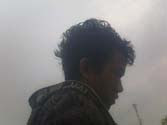Sigiriya, The Lion Mountain, Sri Lanka
Sigiriya (Lion's rock, Sinhalese - සීගිරිය) is a large stone and ancient rock fortress and palace ruin in the central Matale District of Sri Lanka, surrounded by the remains of an extensive network of gardens, reservoirs, and other structures. A popular tourist destination, Sigiriya is also renowned for its ancient paintings (frescos), which are reminiscent of the Ajanta Caves of India. It is one of the eight World Heritage Sites of Sri Lanka.
Sigiriya may have been inhabited through prehistoric times. It was used as a rock-shelter mountain monastery from about the 5th century BC, with caves prepared and donated by devotees of the Buddhist Sangha. According to the chronicles as Mahavamsa the entire complex was built by King Kashyapa (477 – 495 CE), and after the king's death, it was used as a Buddhist monastery until 14th century.
The Sigiri inscriptions were deciphered by the archaeologist Senarath Paranavithana in his renowned two-volume work, published by Cambridge, Sigiri Graffiti and also Story of Sigiriya.
One of Asia's major archaeological sites, Sigiriya presents a unique concentration of fifth-century urban planning, architecture, gardening, engineering, hydraulic technology and art. Centred on a massive rock rising 200 meters above the surrounding plain, Sigiriya s location is one of considerable natural beauty and historical interest. An area of ancient settlement lying between the historic capitals of Anuradhapura and Polonnaruva, the Sigiriya plain still retains much of its forest cover, and many of its present village settlements and man-made village reservoirs date back to the first millennium B.C. In its present form, Sigiriya itself is essentially a walled-and-moated royal capital of the fifth century A.D., with a palace complex on top of the rock, elaborate pleasure gardens, extensive moats and ramparts, and the well-known paintings on the western face of the rock.
The history of Sigiriya, however, extends from prehistoric times to the seventeenth and eighteenth centuries. The earliest evidence of human habitation is in the Aligala rock-shelter which lies to the east of the Sigiriya rock. This is a major prehistoric site of the mesolithic period, with an occupational sequence starting nearly five thousand years ago and extending up to early historic times. The historical period at Sigiriya begins about the third century B.C., with the establishment of a Buddhist monastic settlement on the rock-strewn western and northern slopes of the hill around the rock. As in other similar sites of this period, partially man¬made rock-shelters or 'caves', with deeply-incised protective grooves or drip¬ledges, were created in the bases of several large boulders. There are altogether 30 such shelters, many of them dated by the donatory inscriptions carved in the rock face near their drip-ledges to a period between the third century B.C., and the first century A.D. The inscriptions record the granting of these caves to the Buddhist monastic order to be used as residences.
Kasyapa, the master builder
Sigiriya comes dramatically, if tragically, into the political history of Sri Lanka in the last quarter of the fifth century during the reign of King Dhatusena I (459-477 A.D.), who ruled from the ancient capital at Anuradhapura. A palace coup by Prince Kasyapa, the King's son by a non-royal consort, and Migara, the king's nephew and army commander, led ultimately to the seizure of the throne and the subsequent execution of Dhatusena. Kasyapa, much reviled for his patricide, established a new capital at Sigiriya, while the crown prince, his half-brother Moggallana, went into exile in India. Kasyapa 1 (477-495 A.D.) and his master-builders gave the site its present name, 'Simha-girl' or 'Lion-Mountain', and were responsible for most of the structures and the complex plan that we see today. This brief Kasyapan phase was the golden age of Sigiriya.
The post-Kasyapan phases, when Sigiriya was turned back into a Buddhist monastery, seem to have lasted until the thirteenth or fourteenth century. Sigiriya then disappears for a time from the history of Sri Lanka until, in the sixteenth and seventeenth centuries, it appears again as a distant outpost and military centre of the Kingdom of Kandy. In the mid¬nineteenth century antiquarians begin to take an interest in the site, followed some decades later by archaeologists, who have now been working there for nearly 100 years, since the 1890s. The Cultural Triangle project began its work at Sigiriya in 1982 and has focussed attention not only on the best-known and most striking aspects of Sigiriya: the royal complex of rock, palace, gardens and fortifications of the 'western precinct', but also on the entire city and its rural hinterland.
source :
en.wikipedia.org/wiki/Sigiriya
http://www.lanka.com/sri-lanka/guide-to-sigiriya-873.html




0 komentar:
Posting Komentar